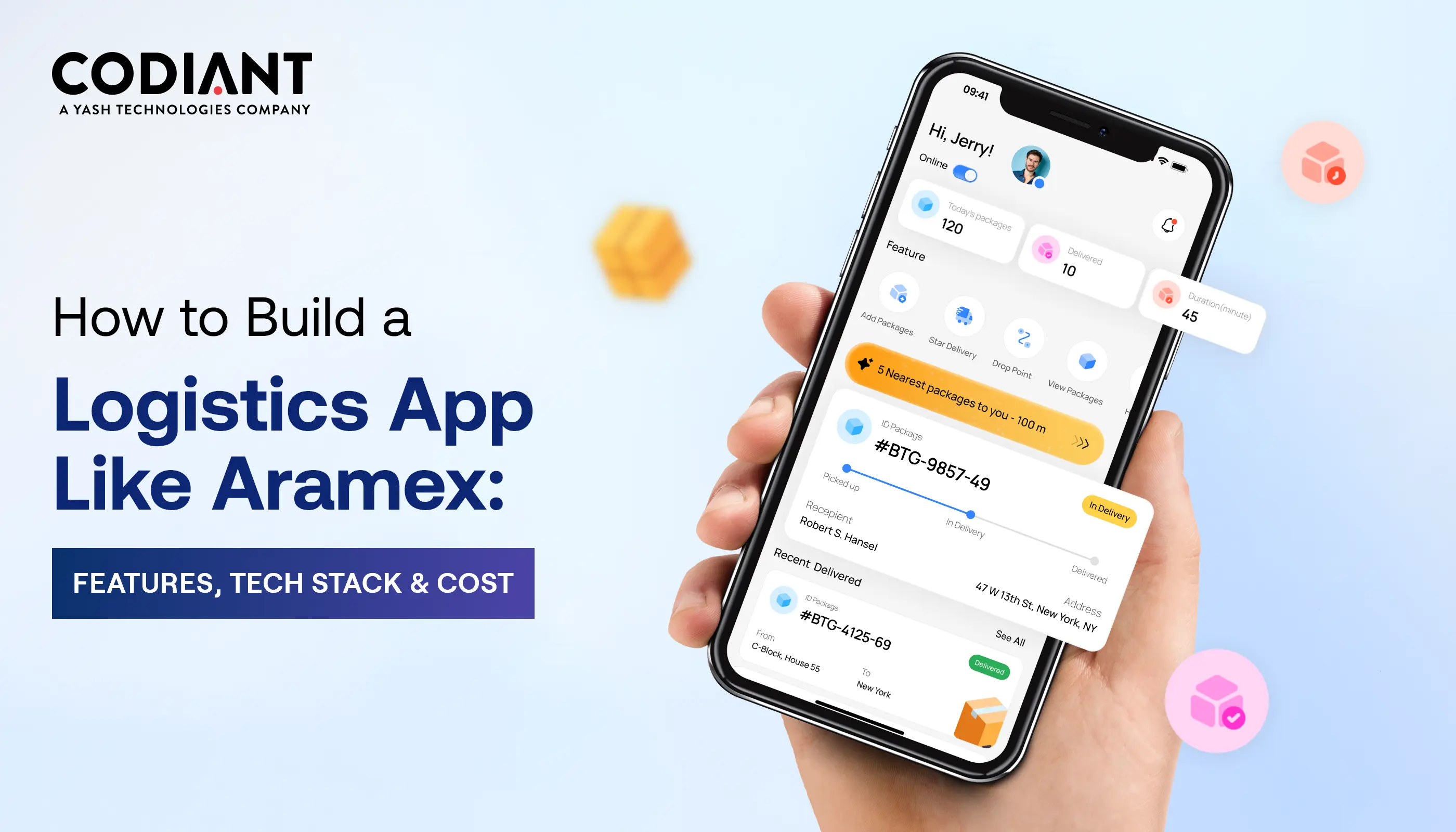Tips and Tricks for Cost-Effective App Development
Table of Contents
Subscribe To Our Newsletter

Mobile apps can bring good value, customer engagement, and potential revenue. However, there is no assurance for getting success, particularly for startups and small businesses. The cost of app development can be a huge roadblock to cost-effective app development.
Startup businesses can’t easily estimate a return on investment for mobile app development. This uncertainty makes it challenging for them to rationalize the upfront costs of mobile app development.
The tricks to reduce a development cost can save businesses from this dilemma without compromising on the app’s quality aspects.
Read here how to reduce mobile app costs and what mistakes you should avoid during the cost-effective mobile app development phase.
How to Reduce Mobile App Cost?
1. Define Clear Objectives and Requirements
It is essential to start your development cost reduction drive into the realm of developing an affordable mobile app. You need to acquire a complete knowledge of your app’s objectives and requirements.
The greater precision you show during this phase, the more skillfully you can avoid expensive alterations or additions throughout the development process.
- Purpose
Define the purpose of developing your mobile app. What is the primary objective of your app? Is it for entertainment, food delivery, education, productivity, or something else? - Target Audience
Determine who are your target users. What are their preferences and pain points? - Core Features
Identify the essential features your app must have to fulfill its purpose.
2. Choose the Right Development Approach
There are various ways to develop a functional Android or iOS app. Selecting the best approach for development with a mobile app development guide will affect the all-inclusive app development procedure in cost-effective app development.
- Native App Development
These apps are built for a specific platform (iOS or Android) and offer the best performance and user experience. Mobile app developers are required to create distinct code for Android utilizing Java and for iOS utilizing either Swift or Objective C. - Hybrid App Development
Hybrid apps are developed using web technologies (HTML, CSS, and JavaScript) and wrapped in a native shell. Such apps can run on multiple platforms. It is the most suitable solution for cross-platform development. - Progressive Web Apps (PWAs)
PWAs are websites that possess the appearance and functionality of mobile applications. These PWAs can be conveniently accessed through web browsers, offering a cost-effective means to engage users across different devices.
Select the most suitable approach based on factors such as your target audience and the specific features your application demands. Hybrid and PWA approaches are frequently chosen due to their cost-effectiveness. This enables simultaneous development for multiple platforms.
3. Prefer MVP Development
MVP – Minimum Viable Product requires you to create a simple version of your application including its critical components.

MVP development enables you to
- Get your app to market faster.
- Start gathering user feedback and data.
- Minimize initial development costs.
- Determine if there is a demand for your app.
- Get attention from investors
- Experiment with low-risk
As your application garners more attention, you may progressively incorporate additional functionalities in accordance with user input and commercial needs.
4. Open Source and Third-Party Tools
The availability of open libraries and third-party tools features can significantly reduce development time and cost.
Here are some areas where you can leverage them:
- UI Frameworks
Use open-source UI libraries like Bootstrap or Material-UI for consistent and responsive design. - Development Tools
Integrated Development Environments (such as Visual Studio Code) and version control systems (such as Git) are essential to developing an affordable mobile app. - Backend Services
Utilize third-party services for cloud hosting, databases, and authentication to offload backend development. - Analytics and Monitoring
Google Analytics and Crashlytics are free/reasonable analytics tools that help gain insights into app usage.
By using open-source and third-party resources, you can focus more on building unique features that make your affordable mobile app stand out.
5. Agile Development Methodology
Agile development methodology is one of the tricks to reduce development cost. It focuses on flexibility, collaboration, and iterative progress. Adopting Agile practices can help in identifying issues and adjusting early in the affordable mobile app development process. Later, it reduces the bug-fixing cost after development.
Key principles of agile development include:
- Sprint Planning
Work is divided into short and focused periods called sprints. This allows for more manageable affordable mobile app development tasks. - Continuous Feedback
Regular feedback from stakeholders and users is used to guide development and prioritize features. - Iterative Development
The app evolves through multiple iterations. It comes with new features and improvements added in each cycle. - Adaptability
Agile methodologies allow for changes and adjustments based on user feedback and evolving business requirements.
6. Outsourcing and Offshoring
Outsourcing and offshoring affordable mobile app development projects to countries with low labor costs can save huge costs. Many companies have successfully deployed talented development teams in places like Eastern Europe, India, and Southeast Asia to help decrease app development costs in cost-effective app development.
When considering outsourcing or offshoring, remember to:
- Choose a Reputable Partner
Research and select a trusted development partner or agency with a strong track record. - Effective Communication
Ensure clear communication. Make a process for tracking progress and providing feedback. - Legal and Intellectual Property Considerations
Address legal and intellectual property rights to protect your app’s assets.
Explore the key benefits of hiring offshore developers to see how it can transform your development model and boost ROI
7. Cross-Functional Development Teams
Creating a cross-functional development team has the potential to do cost savings. For example; when a team member can handle both frontend and backend development, it eliminates the necessity for additional recruitment.

This strategy proves especially advantageous for smaller teams that operate within constrained budgets.
A cross-functional team typically includes roles like:
- Developers
Responsible for writing code and implementing features. - Designers
Create the app’s visual elements and user interface. - Testers/QA Analysts
Ensure the app is free of bugs and functions as expected. - Project Managers
Coordinate the development process and manage resources.
8. Reusable Code Components
Reusing code components and templates can significantly speed up development, reduce the likelihood of errors, and save costs. Consider creating a library of custom code snippets or using open-source code repositories to enhance affordable mobile app development efficiency.
Some examples of reusable code components include:
- UI Elements
Buttons, forms, and navigation components. - Authentication Modules
Implementing secure login and registration functionality. - Backend APIs
Reusable code for connecting to servers and databases.
9. Utilize Cloud Services for Backend
The establishment and upkeep of traditional server hosting can cause high expenses. But, the infrastructure pricing can be reduced by using Amazon Web Services, Google Cloud Platform, and Microsoft Azure.
Cloud services provide adaptable and versatile solutions for hosting the backend of your affordable mobile app in cost-effective app development. It comes with pay-as-you-go pricing models that align with your usage.
Benefits of cloud services for backend development include:
- Scalability
Easily adjust resources to meet demand. - Reduced Maintenance
No need for physical servers or extensive server management. - Cost Efficiency
Pay only for the resources you use.
10. App Testing Automation
Automated testing tools help detect and rectify bugs at the initial stages of the development process. This gives the benefits of cost saving and enhances the quality of an affordable mobile app. Further, Selenium, Appium, and TestFlight like automated testing tools can streamline the testing process.
Types of automated testing include:
- Unit Testing
Testing individual components or functions. - Integration Testing
Testing the interactions between different parts of the app. - User Interface Testing
Evaluating the app’s interface and interactions. - Load Testing
Assessing how the app performs under various levels of user traffic.
However, it is significant to minimize app development expenses for numerous businesses, particularly startups and small companies with limited financial resources.
In order to attain cost-effective app development while ensuring quality and functionality, it is essential to be aware of common errors. Such errors could result in unnecessary outlays.
Also Read: How To Write A Mobile App Product Requirements Document
What Mistakes to Avoid to Reduce App Development Cost?
1. Inadequate Planning
Failing to create a detailed project plan is a recipe for cost overruns. Start with a well-defined scope, requirements, and a clear roadmap. A lack of planning can result in changes and rework, which can be expensive.
2. Scope Creep
Avoid making constant changes to the project’s scope during development. Each modification can lead to additional coding, testing, and design work. This increases both time and cost. Clearly define the project scope from the outset and stick to it.
3. Choosing the Wrong Development Team
Hiring the cheapest manufacturers or going with an inexperienced team may seem cost-effective initially. But, it can lead to poorly fixed results and expensive products on the road. Hence, invest in a skilled and experienced development team that can effectively deliver high-quality products.
4. Ignoring User Research
Failing to conduct proper user research can result in developing features that users don’t need or want. This not only wastes development resources but also results in a less user-friendly app. Research your target audience’s preferences and needs before development begins.

5. Overlooking Cross-Platform Development
Developing separate apps for iOS and Android often demands significant time and investment. Leveraging cross-platform frameworks such as Flutter allows businesses to create high-quality apps for both platforms efficiently. Hiring skilled Flutter developers ensures seamless performance, faster delivery, and cost-effective solutions without compromising on user experience.
6. Adding Irrelevant Features
Keep the app’s features and functionality aligned with your target audience’s requirements. If you over-engineer your app by adding unnecessary features, it will increase development costs and time. Also, it will lead to potential user confusion.
7. Inadequate Testing
Skipping thorough testing can lead to costly post-launch bug fixes and updates. Allocate sufficient resources for QA and testing. This helps to catch and resolve issues early in the development process.
8. Inefficient Project Management
Delays and cost overruns occur due to ineffective project management. It is good to use trusted project management tools that help build clear communication channels. Later, project management tools help to track progress and keep the project on track.

9. Inadequate Security Measures
Neglecting security can be a costly mistake. Data breaches and vulnerabilities can result in expensive legal and technical consequences. Incorporate robust security measures from the beginning. It helps prevent costly security breaches.
10. Ineffective Scaling Strategies
Plan for future growth and scalability. If the app becomes successful, you’ll need to handle increased user loads and data. Failing to plan for scalability can result in costly infrastructure changes.
Developing an affordable mobile app is a crucial choice. Each action you undertake will influence the cost of developing your mobile application, including the duration required for app creation, launch, and the overall acceptance of your product in the market.
At Codiant, a leading Mobile App Development Company in Saudi Arabia, we specialize in delivering high-quality, cost-effective app development solutions. Say goodbye to budget overruns and hello to innovative mobile apps that won’t break the budget.
Our team of mobile app development experts uses proven strategies and the latest technologies to reduce development costs and turn your app idea into reality, while maintaining both quality and affordability.
Frequently Asked Questions
The cost can range from a few thousand dollars to over $500,000, depending on:
- App complexity and features
- Platform (iOS, Android, or both)
- Design requirements
- Backend infrastructure
- Hiring model (in-house team or outsourcing)
- Ongoing maintenance and updates
For a basic app with minimal features or minimum viable product(MVP), the minimum budget can range from $10,000 to $50,000, including:
- App design
- Basic functionality
- Simple backend
- Testing and deployment
More advanced apps with complex features will require a higher budget.
While it’s possible to build a very basic app for free using no-code platforms or open-source tools, a fully-functional, polished app with advanced features will require a budget.
Free options are limited in terms of features, customization, and scalability. For a professional-grade app, some investment is necessary for design, development, and maintenance.
There is no fixed cost for app development as it varies based on several factors.
However, some common fixed costs include:
- App design and wireframing
- Project setup and infrastructure
- Initial development and coding
- Basic testing and deployment
Additional costs may be incurred for advanced features, ongoing maintenance, updates, and marketing.
The key factors influencing app development costs are the app’s complexity, features, platforms, design requirements, and the development team or agency you choose to work with.
Featured Blogs
Read our thoughts and insights on the latest tech and business trends
How to Integrate AI in Recruitment and Cut Hiring Time by 70%
- November 13, 2025
- Artificial Intelligence
Recruiting teams face a clear operational challenge: too much manual work and not enough qualified talent reaching the finish line. Even with modern ATS systems, most hiring workflows still depend on human-driven screening, coordination, and... Read more
How to Build AI Agents That Can Speed Up Your Work and Reduce Other Expenses
- November 10, 2025
- Artificial Intelligence
Businesses today are looking for faster ways to work and smarter tools that cut costs. That’s why AI agents are quickly becoming a key investment for companies of all sizes. These autonomous systems can perform... Read more
How to Build a Logistics and Transportation App Like Aramex?
- November 6, 2025
- Logistics & Transportation
In a Nutshell: A logistics app like Aramex helps businesses manage deliveries, track shipments, and serve customers better. Technology is now needed in logistics because customers want fast delivery and real-time tracking. A logistics app... Read more





